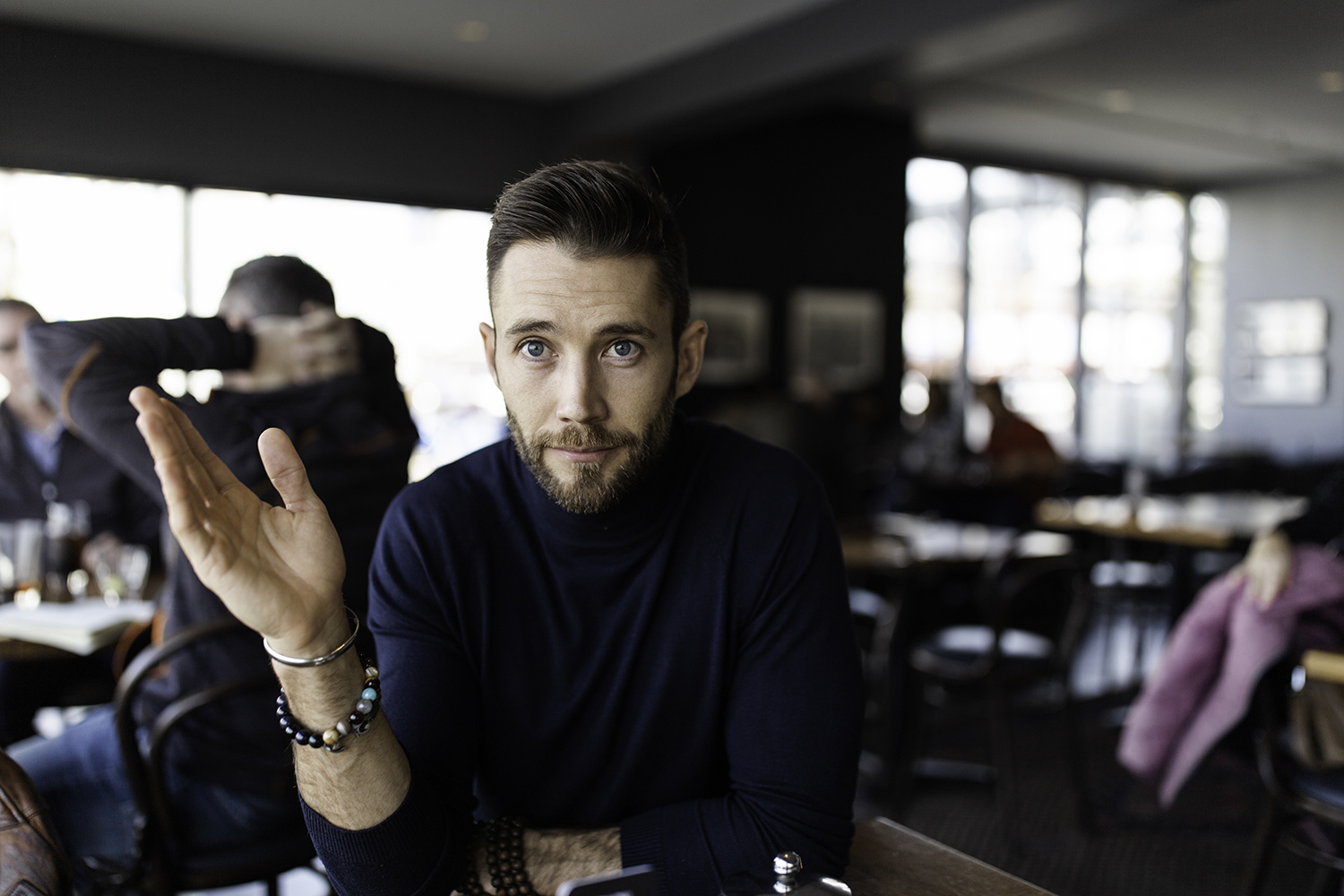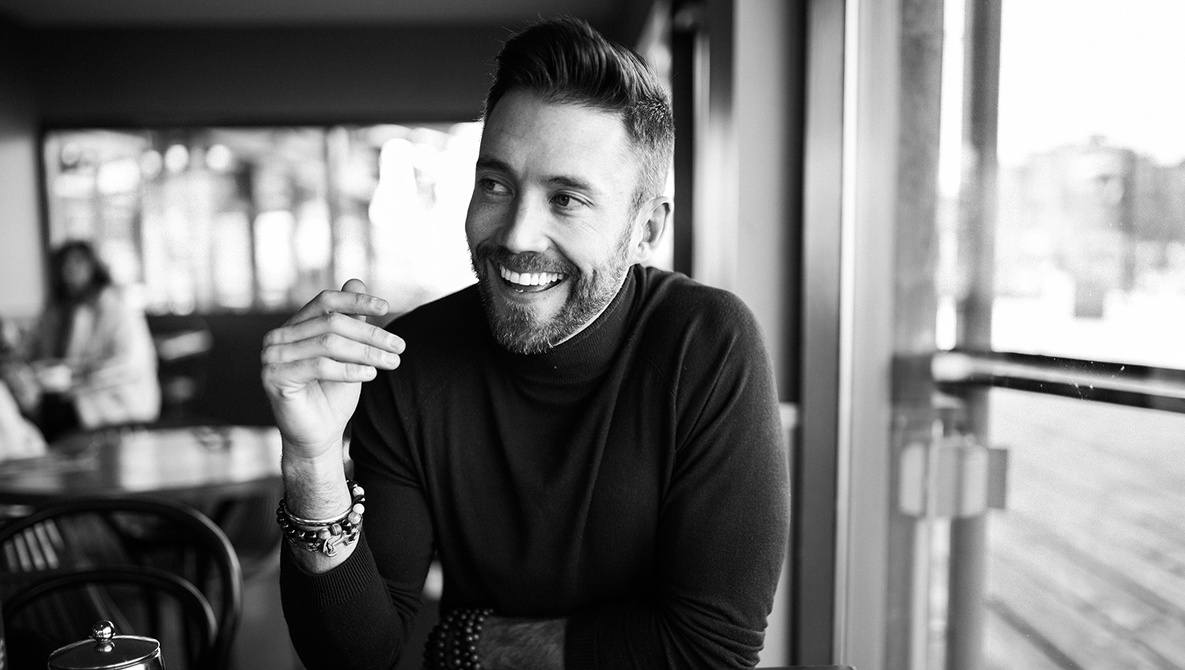Looking back at my early portraits often makes me cringe. I’m not even afraid to admit it now. It was always a goal of mine to be a competent portrait photographer, but I was incredibly shy and didn’t know how to engage with the people in front of my lens. I was always somehow dissatisfied with my results, as I could never seem to connect with my subjects on a level deep enough for them to let their guard down.
After an extended period of trial and error, as well as paying close attention to other photographers’ work that I admired, I finally found a method that worked for me. However, many of my early portraits looked like test shots without a trace of life in them, since my only goal was to make sure that the photographs were properly lit and composed. In other words, capturing genuine expressions during a photoshoot didn’t come naturally to me. At all. Not even a little bit. But once I was finally brave enough to look at my work with a critical eye, I realized that I needed to turn my weakness into a strength.


I believe this is a common problem for a lot of photographers working today. Many photographers focus so much on the lighting, composition, styling, etc., that they forget they’re photographing a human being and not a product. Don’t get me wrong, those ingredients are absolutely important to the success of an image, but I would argue that a portrait without any trace of emotion is dead on arrival. Moreover, I’ve seen several published celebrity portraits with a bit of motion blur or slightly missed focus that are totally successful because the person is animated. Interestingly, this was more commonplace back when film was the photographic standard, and perhaps more spontaneous or candid moments were prioritized over an obsession to perfect the still image like we’re so accustomed to today.
Two photographers that I admire very much are Peggy Sirota and Ben Watts for their superhuman ability to bring the best out of their models and coax emotions out of them that nobody else has. Seriously, look them up. They have the secret sauce, there’s no question in my mind. Even better, watch some behind-the-scenes videos to see how they work and interact with their subjects. It’s for precisely this reason that their work ends up in the biggest magazines month after month.


So how does a photographer bring the best out of a person during a portrait shoot you might be asking? I will not claim to be an authority on the subject, but here are some methods that have been working well for me so far:
- This first point is going to sound counterintuitive but trust me on this. Don’t engage too much with the model in conversation until you start taking photos. Be polite of course, but I try to say the bare minimum until after I’ve taken any lighting test shots and I’m ready to shoot. My main goal is to get to know them as the shoot progresses.
- Put them in a pose that you like, and then talk their ear off. Talk about where they’re from, their school or work, their ambitions, favorite music, food, their love life, whatever. The point is to get the person in front of you to talk about anything that they’ll engage with you in, in order to distract them from what they’re doing at that very moment, which is your photoshoot.
- Leave your ego at the door. I am not afraid to be silly or tell embarrassing stories about myself in order to make the person feel more comfortable. This can feel like a lot of work, but it is well worth the extra effort in my opinion. For the record, it took me a long time to feel confident with this technique. I also try to avoid self-deprecating humor, as that can actually have the opposite effect if not done carefully, and yes I know from experience.
- Energy is important and music helps. I always have a high-energy photoshoot playlist ready to go, and often ask the person being photographed if they have music they’d like to listen to while we shoot. I also try to avoid being over-caffeinated so that high energy doesn’t become nervous energy.
- Keep an eye out for the candid moments and be ready to capture them like a sniper. I’ve seen too many behind-the-scenes photoshoot videos posted online where the model has great expressions spattered throughout the video, but the final images are somehow lifeless because the photographer wasn’t watching out for the model’s natural mannerisms.


If you’re ready to tell me that I’m wrong, let me get ahead of you by admitting there are of course a few exceptions. Fashion photography is a great example of a genre that doesn’t necessarily need to prioritize lively expressions in order to be successful. One could argue that the person being photographed in a fashion photograph is merely an accessory to the clothing, but I’ll leave that to others to determine.
Someone like the great Dan Winters is another exception. Not only are his images lighting masterpieces, but he always seems to capture subtle yet quite powerful expressions that perfectly compliment the overall mood of the photograph. He’s not the only one, but he immediately comes to mind when I think of quiet emotions done well.
Not every image in a photoshoot needs to have a happy expression, but I strongly believe a shoot is more successful with a wide variety of expressions in the bag. I am always more satisfied from a personal standpoint, and the client likes to have options. Just remember, every person is different, and everyone expresses themselves in a different way. At the end of the day, the diversity of expressions from photographing different people will naturally add variety to your portfolio that viewers will gravitate towards. And that’s a great thing.







Nicklaus, I enjoyed this article. Resonated with me as an honest friend once told me my portraits were lifeless. Gulp. But point taken, and this is helpful advice to help address that. Thanks.
Hey Mark, thanks for saying that, it means a lot to me. Yes, I know exactly what that feels like, as a few years ago I heard the same thing from multiple people that I showed my work to...people who I was seeking validation from no less. I've also had someone tell me that I "need to get outside more" after showing them some photos that I thought for sure they would be impressed with. Both times definitely stung, and I may have put the camera away for a month or two after each criticism.
Hey Lee,
Great points, thank you for the thoughtful comment!
I can totally relate to the camera shy headshot clients that you get sometimes, as I've had those experiences too, and in fact I am one of those people when it's my turn to be photographed. You sound like you really have your technique dialled in! I love your phrase "expression is a function of thought", and I'll have to remember the TOM CRUISE trick for next time. I can see that being a priceless way to put someone at ease :)
What is the Tom Cruise trick? Excellent article.
" but I would argue that a portrait without any trace of emotion is dead on arrival" And I wouldn't. You give great advice about how to conduct a shoot. And Dan Winters is a terrific photog.
Thanks for your comment Lorin, much appreciated!
You've got some strong lighting skills up your sleeve, great job.
Nicklaus, I too enjoyed your article. I am a hobbyist photographer, and your description of your former style is me exactly. I can engage with people... until it comes time to start clicking off the portraits. I am definitely going to try your excellent suggestions. Oh, BTW - I also enjoyed that it was an article, and not a 10+ minute video full of fluff!
Thanks so much Jerry!
I am so glad you enjoyed the article. I do enjoy watching Youtube videos, but my preference after a long day is to read as opposed to watching content. I'm glad you feel the same.